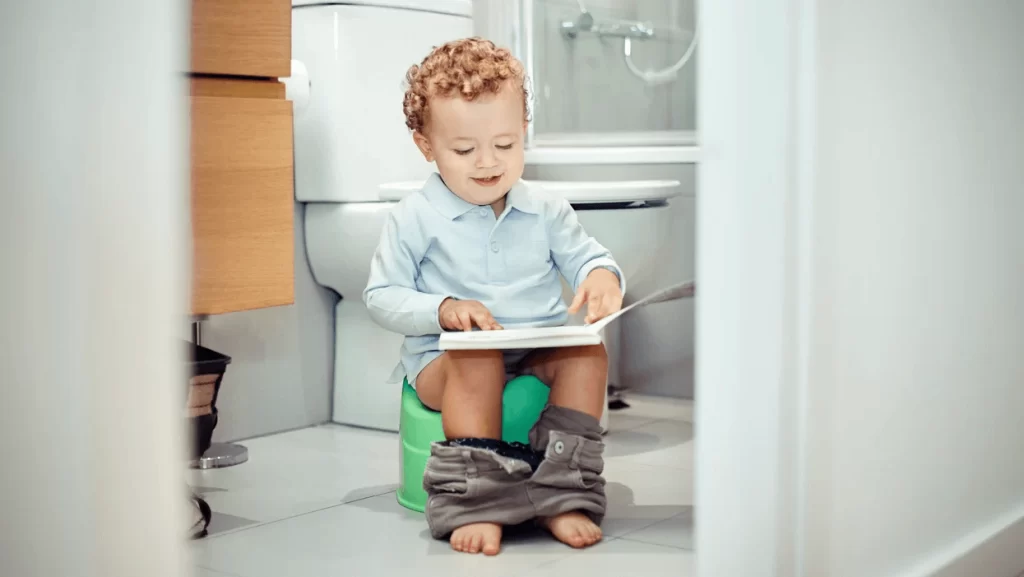
Montessori Approach of toilet training in Kids and its key principles
May 28, 2024
Montessori philosophy does not prescribe a specific age for toilet training, as each child’s development is unique and progresses at their own pace. Instead, Montessori emphasizes following the child’s cues and readiness signs, as well as providing a supportive environment for toilet learning. Here are some key principles of Montessori toilet training:
- Observation: Montessori encourages parents and caregivers to observe their child for signs of readiness for toilet training. These signs may include showing interest in the bathroom, staying dry for longer periods, demonstrating awareness of bodily functions, or expressing a desire to use the toilet like adults.
- Independence: Montessori values promoting independence and self-care skills in children from a young age. Toilet training is seen as an opportunity for children to learn to recognize their own bodily cues, take responsibility for their hygiene, and gain confidence in their abilities.
- Preparation: Before beginning toilet training, Montessori recommends preparing the environment to support the child’s success. This may involve providing a child-sized potty or toilet seat insert, ensuring easy access to the bathroom, and equipping the child with appropriate clothing that they can manage independently.
- Gentle guidance: Montessori advocates for providing gentle guidance and encouragement throughout the toilet training process. Adults can offer verbal support, demonstrate proper techniques, and celebrate small successes to motivate the child and build their confidence.
- Patience and consistency: This approach recognizes that toilet training is a gradual process that requires patience and consistency. Adults should be prepared for setbacks and accidents, and approach the process with understanding and support rather than pressure or frustration.
- Respect for the child’s pace: Above all, Montessori emphasizes respecting the child’s individual pace and preferences when it comes to montessori toilet training. Adults should avoid forcing or rushing the process, and instead follow the child’s lead, providing support and guidance as needed.
How long does the Montessori approach take?
The Montessori approach to toilet training is child-led and respects each child’s unique pace. Typically, it begins around 18 months to 2 years old, but the process varies for each child. With gentle guidance and supportive environments, children often achieve toilet independence within a few months, embracing it as a natural part of their development.
Readiness signs of toilet in kids
Its very important for parents and montessori educators to understand the readiness signs of toilets in kids and take action accordingly. These Readiness signs often appear around 18-24 months in kids for toilet as mentioned below.
1, Showing interest in the toilet
2. Staying dry for longer periods
3. Communicating the need to go
4. Pulling down pants independently
5. Discomfort with dirty diapers
6. Regular bowel movements
7. Imitating adult bathroom habits
Montessori vs. traditional toilet training
Montessori toilet training is child-led, starting when the child shows readiness, often around 18 months, and emphasizes independence and natural development. In contrast, traditional toilet training is parent-directed, with set timelines and structured methods. Montessori fosters self-reliance and respects the child’s pace, while traditional methods can be more rigid and schedule-driven.
Overall, Montessori views potty training as a natural and gradual process that unfolds in response to the child’s readiness and development. By observing the child, preparing the environment, offering gentle guidance, and respecting the child’s pace, adults can support the child in acquiring this important self-care skill with confidence and independence.


